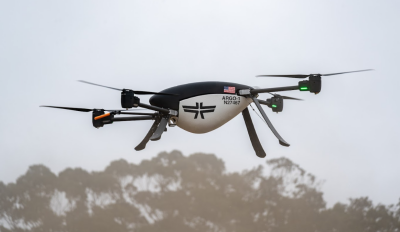A few days ago, on April 30, the FAA announced it is phasing in a nationwide beta test of the Low Altitude Authorization and Notification Capability (LAANC) that will eventually deploy the system incrementally at nearly 300 air traffic facilities covering approximately 500 airports. The beta expansion follows successful evaluation of a prototype LAANC system last November.
LAANC helps support the safe integration of drones into the nation’s airspace. Drone operators using the system can receive near real-time airspace authorizations. This dramatically decreases the wait experienced using the manual authorization process and allows operators to quickly plan their flights. LAANC uses airspace data provided through temporary flight restrictions, NOTAMS and UAV facility maps that show the maximum altitude ceiling around airports where the FAA may authorize operations under Part 107.A day later on May 1st during XPONENTIAL 2018, a couple companies announced they were collaborating to take the power and potential of this system to a whole new level. Kittyhawk, a company specializing in enterprise drone operations software and Jeppesen, a Boeing Company, announced a collaboration where both firms have started working toward offering digital airspace authorization directly from the FAA into Kittyhawk’s platform. Upon FAA approval, Kittyhawk’s elite enterprise customers will be able to receive digital authorization to operate within thousands of square miles of airspace in near-real time and will be able to send digital flight plan notifications.Kittyhawk and Jeppesen are aiming at streamlining the LAANC authorization process from its current state by making the request, and subsequent authorization, to be as easy to use as modern drones are to fly. Jeppesen and Kittyhawk’s combined capabilities will deliver navigation data from Jeppesen and UAV platform operations management from Kittyhawk, to simplify commercial drone operations.“We’re approaching LAANC as more than just a faster authorization, but a critical piece to an effective drone operation,” said Jon Hegranes, CEO of Kittyhawk. “Real-time authorization without real-time visibility, enforcement, or compliance leaves more problems than solutions for commercial operators.”Over the coming months, the FAA will release over 2,000 square miles of new airspace for drones to fly in densely populated areas and near airports. This new airspace will be a boon to the commercial drone industry and enable more flights than ever before. Some of Kittyhawk’s enterprise customers estimate that they will be able to fly up to twice as many flights with LAANC versus what had been an up to 90-day manual authorization process.“This strategic alliance with Kittyhawk will help us gain a strong foothold in the dynamic and expanding UAV/drone market for commercial operations,” said Mike Abbott, director, Jeppesen Data Solutions. “Eliminating manual processes through data-driven navigation and LAANC operations management matches perfectly with our dedication to simplifying complex procedures in traditional aviation fields and we look forward to exciting new developments with our Kittyhawk relationship, moving forward.”"Some of our enterprise customers have estimated that the rollout of LAANC will double the amount of flights they're able to conduct per year," Joshua Ziering told Commercial UAV News. "These are companies that are already seeing a ROI, so that return stands to be doubled."Kittyhawk plans to start deploying LAANC to enterprise customers in the coming weeks and will have a full deployment available to the public shortly after. Kittyhawk and Jeppesen will continue to work together to safely empower the commercial drone industry with more flight opportunities. It's a big deal for the drone industry as a whole to see a company with the history and pedigree of Jeppesen work with Kittyhawk to explore and define how this capability will impact the market.For more information about LAANC in general and the Kittyhawk/Jeppesen announcement in particular,Subscribe
The information you submit will be stored and used to communicate with you about your interest in Commercial UAV News. To understand more about how we use and store information, please refer to our privacy policy.
May 3, 2018
Kittyhawk and Jeppesen Set to Take LAANC to a Whole New Level















Comments